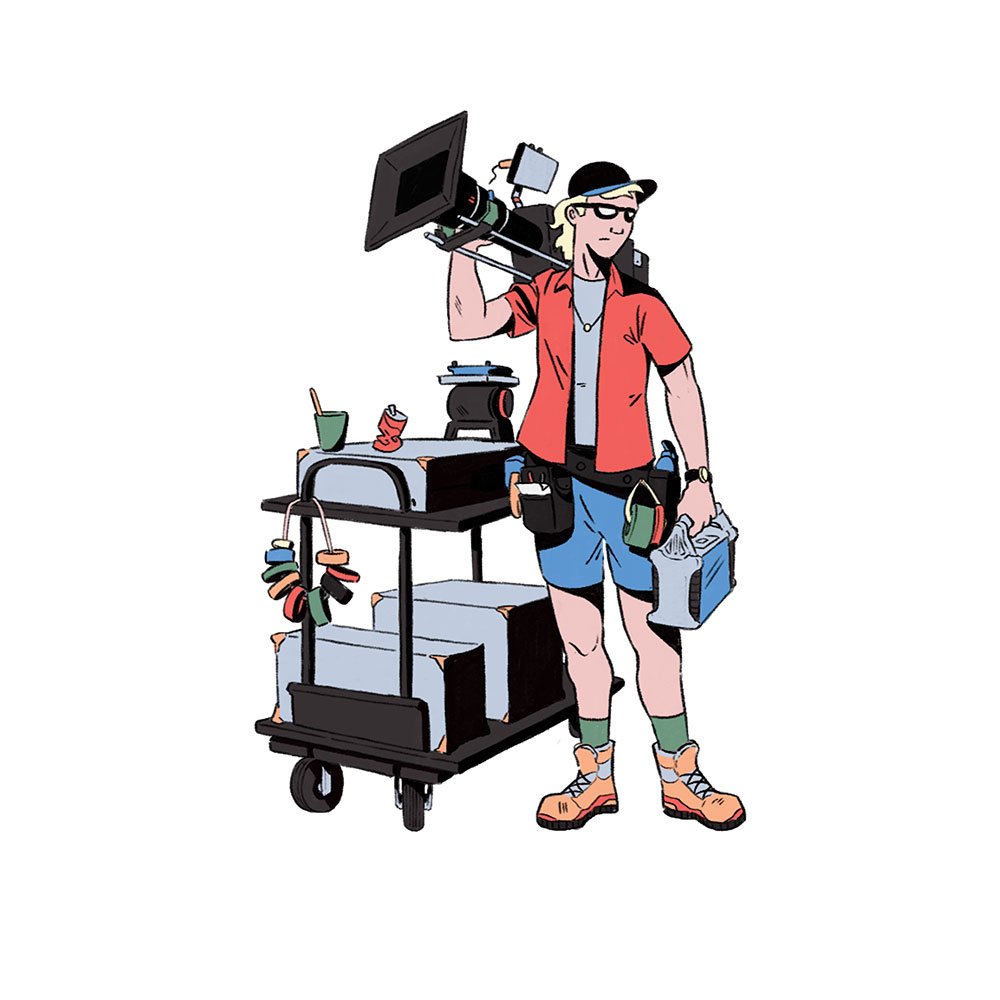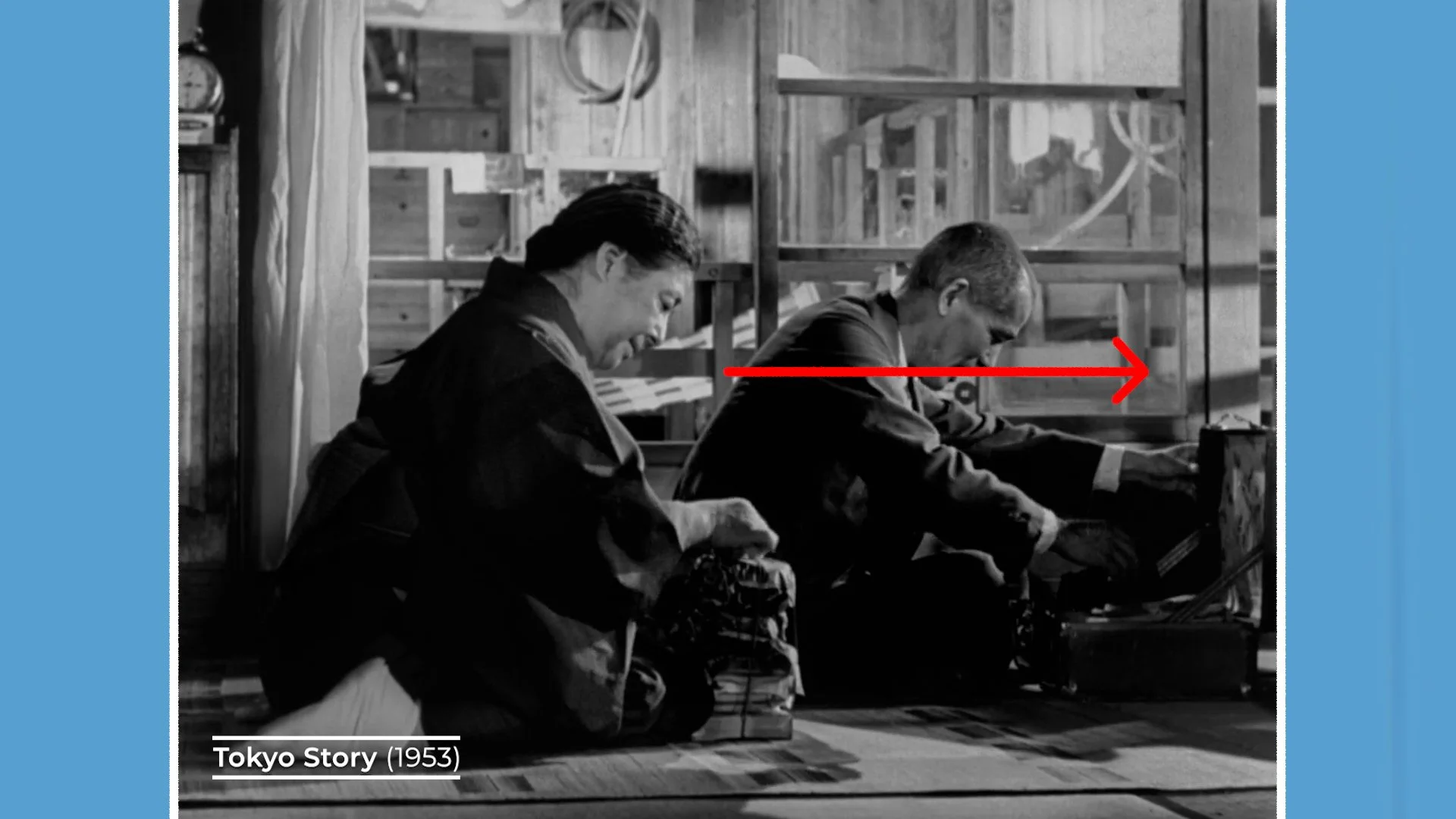The Precise Cinematography of Yasujirō Ozu
INTRODUCTION
To some directors, form is everything. In a medium where 50% of the experience is visual, every photographic decision that is made is a crucial one which shapes the experience of the audience.
When it comes to crafting shots, some directors have such strong stylistic preferences that their work becomes instantly recognisable.
One director whose work has exceedingly powerful visual trademarks bound by order and objectivity is Yasujirō Ozu. So much so that their legacy and influence can be felt in many contemporary filmmakers' work today: from Wes Anderson to Koganada or Hong Sang-soo.
What are some of these visual characteristics, how do they influence how we experience the content of the movie, and what impact do they have on contemporary filmmakers?
ORDER
Perhaps the biggest signifier of the cinematography in Ozu’s work comes from the composition of his frames. They’re almost always rigid, unmoving, straight on and balanced by symmetrical elements.
Take the way that he frames scenes of families inside their homes. He incorporates the square doorways and Japanese architecture to create frames within frames - centering the characters in the living room, balanced equally on either side by walls. For each element in his frames there is an equal, yet opposite element on the other side of the frame.
His shots are the ultimate cinema of order.
Even the way that he positions and layers characters within his frames - which we call blocking - maintains this organised, visual structure. Actors often maintain a perpendicular relationship to the camera or set.
In other words, if the camera is pointed symmetrically towards a doorway, the character will either be positioned directly towards the camera, at 90 degrees to the camera so that they are filmed in profile, or at 180 degrees facing away from the camera.
This style is contrary to the norm in cinema, where the camera and frames are often angled in relation to the set and actors - to create frames which are less flat or straight on and have a greater feeling of dimension and depth.
Instead of deliberately moving the camera in sync with the movement of the characters on screen, Ozu instead locks each frame and lets the performers enter or exit the shot at will. The frame is the frame - observational and objective.
Even his favourite choice of lens, a 50mm, supported this structured approach. It’s a wide enough focal length to be able to shoot a long shot, yet telephoto enough that it keeps the symmetrical and horizontal lines in the frame straight - eliminating any artificial distortion, bending or disorder.
The overwhelming presence of these straight horizontal and vertical lines are another feature of his framing - whether filming interiors or exteriors. Like his use of symmetry, these too give a visual structure to his images.
Now, although these ordered, symmetrical frames may have a certain aesthetic appeal to them - which has influenced many other directors - they also play an important functional role.
Ozu’s cinematography isn’t about visual spectacle but about evoking a deeply felt atmosphere through careful restraint. Many of his stories feature families or relationships which although on the surface may appear peaceful, actually have drama bubbling beneath the surface.
One tension at the heart of many of his films is between tradition and a changing modernity.
Ozu’s symmetrical, static compositions don’t suppress drama - they transform it. The structure of the cinematography counterbalances the disorder and change in his character’s lives.
By emphasizing visual order, they make us feel the disorder in the story and themes. By showing restraint, they reveal emotion. And by holding still, they let us notice the gentle, devastating rhythms of time passing within families.
Minimalism, simplicity and order accentuate the drama and chaos beneath the surface - in stories where conflicts are often avoided or politely danced around - rather than directly addressed.
The world on its surface is presented in perfect, unchanging, static order - while beneath the surface tensions brew as traditions change and time moves forward.
OBJECTIVITY
While Ozu’s manicured framing creates visual order, the cinematography in his movies also helps maintain a strong objectivity.
In other words, rather than presenting deliberately emotional, evocative and subjective images, Ozu instead prefers to back the camera off and observe the action from a detached, more impartial perspective - almost like an observational documentarian might.
So, what are some practical things he does with the camera to create this feeling?
One decision that needs to be made when framing is how low or high the camera will be placed in relation to the subject which is being filmed. Ozu is known for his slightly low angle positioning of the camera - where the lens is often placed either at eye level or just a little bit below the eye level of his characters.
This has become known as the Tatami shot. So called because the camera would be placed on a hi-hat or at the bottom of what he called a ‘crab legs tripod’ - about 1 to 3 feet off the ground - roughly eye level for someone sitting on a tatami mat.
When he needed to shoot close ups or medium close ups of characters his camera team would slightly raise this crab legs tripod by placing it on a higher base. The camera was raised for these shots to avoid the lens distorting the face - which may have been accentuated when shooting at such a low angle.
Placing the camera at the same eye level as his characters gives his shots the feeling that we, as the audience, are right there, sitting on the floor with them - like a silent, objective observer in the room.
This idea that the audience is sitting in the scene is further accentuated when, on certain occasions, he places the eyelines of where the characters are looking so close to the camera itself that it’s almost as if they are staring into the lens - into the eyes of the audience.
We’ve already mentioned his love of a 50mm prime lens - well, part of why he may have been attracted to this focal length is because they say that it gives a similar perspective to that of the human eye. Which again, creates an objective perspective for the viewer which is real - rather than being super distorted and wide angle or super telephoto and compressed.
Another visual technique Ozu used both as a pacing device and to show a bit more of the outside world are what are referred to as Pillow Shots - an allusion to pillow words in Japanese poetry which are decorative or atmospheric interjections.
These are transitional shots of landscapes, buildings, trains, or empty interiors, often unrelated directly to the plot, which act as breathing spaces - evoking a mood, rhythm, or the passage of time.
As we observe these real spaces in real time, they have an almost documentary-like quality to them which builds this cinematography of realism and observational objectivity.
This idea of realism also carried through in the lighting and production design decisions. Although much of his work was shot in black and white, for his later films that were shot in colour he always favoured an earthy, neutral colour palette. With tan browns, greys, blacks, whites and softer colour like blues.
This absence of super punchy colours adds to the realistic, mature visual tone.
Likewise, the lighting in Ozu’s films is what I’d call elevated realism. The direction and placement of the light sources are usually motivated by the real world. Characters are mostly exposed evenly, with soft light.
This style of cinematography has far more of a realistic feel, than for example the hard streaks of light and profuse, dark shadows which were found in many dramatic or noir genre films shot around the same time.
Occasionally, for films that were darker in tone, such as Tokyo Twilight - he did abandone evenly exposed images for more of an expressionistic, shadow laden look.
CONCLUSION
Although many filmmakers may want to make bold, dramatic, colourful visual statements with an ever moving camera, Ozu’s work shows that sometimes the opposite works just as effectively.
His camera language doesn’t do too much or distract from the story - yet is instantly recognisable. Instead the camera blends into the background, preserving order and objectivity. Letting themes, performances and the story slowly bubble to the surface: subtly but beautifully.










